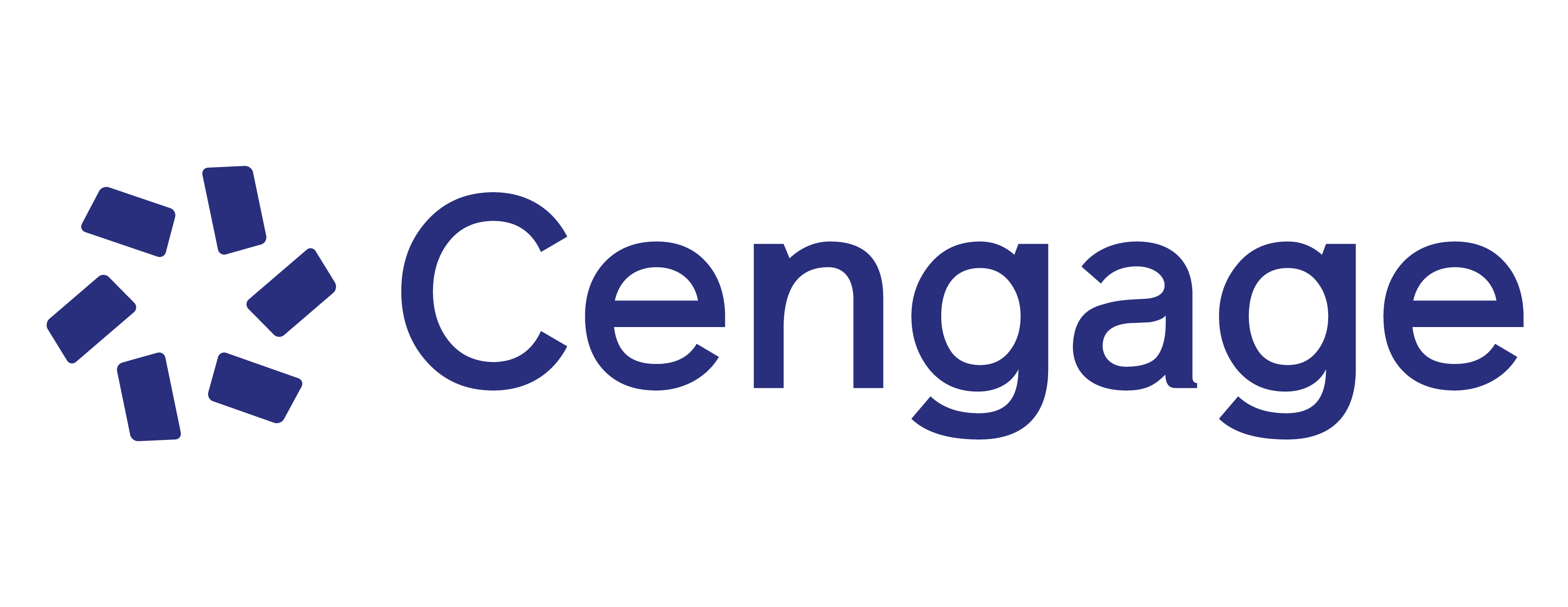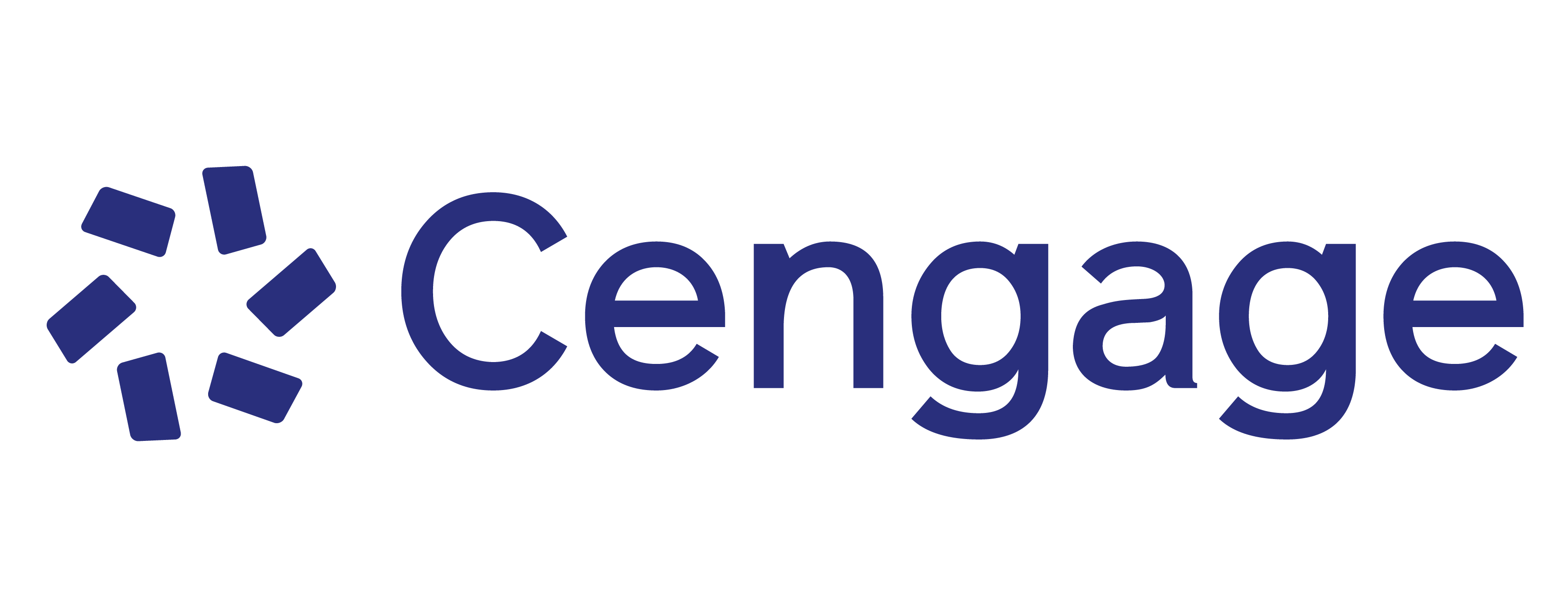While physics can seem challenging, its true quality is the simplicity of fundamental physical theories and concepts that enrich students’ view of the world. Serway/Vuille's COLLEGE PHYSICS, 12th Edition, AP® Edition, provides a clear strategy for connecting those theories to a consistent problem-solving approach, designed to prepare students for the revised AP Physics 1 and 2 exams. The AP edition helps students master physical concepts and improve problem-solving skills. The authors provide a consistent problem-solving strategy and an unparalleled array of worked examples to help students develop an understanding of physics with a streamlined presentation, new conceptual questions and dozens of new AP-style multiple choice and Free Response Questions. The WebAssign digital platform includes Interactive Video Vignettes, learning tools and applications and an interactive eBook.
PART I: MECHANICS
1. Units, Trigonometry, and Vectors.
2. Motion in One Dimension.
3. Motion in Two Dimensions.
4. Newton's Laws of Motion.
5. Energy.
6. Momentum, Impulse, and Collisions.
7. Rotational Motion and Gravitation.
8. Rotational Equilibrium and Dynamics.
9. Fluids and Solids.
PART II: THERMODYNAMICS.
10. Thermal Physics.
11. Energy in Thermal Processes.
12. The Laws of Thermodynamics.
PART III: VIBRATIONS AND WAVES.
13. Vibrations and Waves.
14. Sound.
PART IV: ELECTRICITY AND MAGNETISM.
15. Electric Forces and Fields.
16. Electrical Energy and Capacitance.
17. Current and Resistance.
18. Direct-Current Circuits.
19. Magnetism.
20. Induced Voltages and Inductance.
21. Alternating-Current Circuits and Electromagnetic Waves.
PART V: LIGHT AND OPTICS.
22. Reflection and Refraction of Light.
23. Mirrors and Lenses.
24. Wave Optics.
25. Optical Instruments.
PART VI: MODERN PHYSICS.
26. Relativity.
27. Quantum Physics.
28. Atomic Physics.
29. Nuclear Physics.
30. Nuclear Energy and Elementary Particles.
Appendix A: Mathematics Review.
Appendix B: An Abbreviated Table of Isotopes.
Appendix C: Some Useful Tables.
Appendix D: SI Units.
Answers to Quick Quizzes, Example Questions, and Odd-Numbered.
Conceptual Questions and Problems.
Index.
-
Raymond A. Serway
Raymond A. Serway is Professor Emeritus at James Madison University. He earned his doctorate at Illinois Institute of Technology. Among his accolades, he received an honorary doctorate degree from his alma mater, Utica College, the 1990 Madison Scholar Award at James Madison University (where he taught for 17 years), the 1977 Distinguished Teaching Award at Clarkson University and the 1985 Alumni Achievement Award from Utica College. As a Guest Scientist at the IBM Research Laboratory in Zurich, Switzerland, Dr. Serway worked with K. Alex Müller, who shared the 1987 Nobel Prize in Physics. He also was a visiting scientist at Argonne National Laboratory, where he collaborated with his mentor and friend, the late Sam Marshall. In addition to this text, Dr. Serway is the co-author of COLLEGE PHYSICS, Eleventh Edition; PRINCIPLES OF PHYSICS, Fifth Edition; ESSENTIALS OF COLLEGE PHYSICS; MODERN PHYSICS, Third Edition; and the high school textbook PHYSICS, published by Holt McDougal. He has published more than 40 research papers in the field of condensed matter physics and has given more than 60 presentations at professional meetings.
-
Chris Vuille
Chris Vuille (PhD, University of Florida) is associate professor of physics at Embry-Riddle Aeronautical University, the world's premier institution for aviation higher education. While he has taught courses at all levels, including postgraduate, his primary interest is the teaching of introductory physics courses. He conducts research in general relativity, astrophysics, cosmology, and quantum theory and was a participant in a special three-year NASA grant program where he studied properties of neutron stars. His work has appeared in many scientific journals and in ANALOG SCIENCE FICTION/SCIENCE FACT magazine. He is the coauthor of COLLEGE PHYSICS, Eleventh Edition and ESSENTIALS OF COLLEGE PHYSICS.
-
APPLICATIONS: Margin notes make the relevance of physics to everyday life more obvious by pointing out examples in the text.
-
REVISION OF TOPIC 4, NEWTON’S LAWS OF MOTION: This revision introduces the common contact forces early, easing students’ entry into this difficult topic and increasing their success.
-
WORKED EXAMPLES: A hallmark strength of the text, each worked example is a complete learning experience. The GOAL describes the concepts being explored. The PROBLEM presents the question. The STRATEGY helps students create a framework for working out the solution. The SOLUTION uses a two-column format that provides explanations on the left and mathematical steps on the right, serving as a training tool. REMARKS highlight underlying concepts following the solution. The QUESTION requires a conceptual response to test students' understanding. The EXERCISE reinforces this understanding.
-
PROBLEM-SOLVING STRATEGIES: These strategies provide students with a structured process for solving problems and help them identify the essential steps in solving problems and increasing their skills as problem-solvers.
-
CONCEPTUAL QUESTIONS: Conceptual questions provide students with a means of self-testing the concepts presented in the topic -- some are also appropriate for initiating classroom discussions.
-
MASTER IT TUTORIALS & WATCH IT: Available in WebAssign and indicated in the problems set by icons, Master It Tutorials help students solve problems by having them work through a stepped-out solution, while Watch It videos explain fundamental problem-solving strategies to help students step through selected problems.
-
SYMBOLIC PROBLEMS: Student obtain an answer in terms of symbols. Symbolic problems train the student to postpone substitution of values, facilitating their ability to think conceptually using the equations.
-
QUANTITATIVE/CONCEPTUAL PROBLEMS: Encourage students to think conceptually about physics problems rather than rely solely on computational skills.
-
GUIDED PROBLEMS: Guided Problems break a problem into smaller steps, enabling students to grasp all the concepts and strategies required to arrive at a correct solution.
-
UPDATED AP® CONTENT FOR THE REVISED AP PHYSICS COURSES: This AP® Edition includes new and updated content, a revised correlation in the front of the student edition and revised and new AP-style questions at the end of each chapter. The text also includes two practice exams for AP Physics 1 and AP Physics 2.
-
JUST-IN-TIME HOMEWORK HELP: Available in WebAssign, these tools offer targeted assistance just when a student needs it. Relevant and customizable tools include displayed solutions, solution videos for selected problems and targeted readings and examples from the textbook.
-
INTERACTIVE VIDEO VIGNETTES: Available in WebAssign, these student-focused, video-based activities encourage students to address their alternate conceptions outside of the classroom. These include online video analysis and interactive individual tutorials to address learning difficulties identified by PER (Physics Education Research).
-
QUICK QUIZZES: These quizzes provide students with opportunities to test their understanding of the physical concepts presented in the text, requiring student to make decisions on the basis of sound reasoning.
-
NEW CONCEPTUAL QUESTIONS AND NEW AND REVISED PROBLEMS: New conceptual questions have been added and all questions and problems were carefully reviewed to improve their variety, interest and value while maintaining their clarity and quality. Hundreds of new problems were added with less-used problems removed.
Cengage Testing, powered by Cognero® for Serway/Vuille's College Physics, AP Edition
9798214067568
Cengage Testing, powered by Cognero® for Serway/Vuille's College Physics, AP Edition, Instant Access
9798214067544
Instructor's Companion Website for Serway/Vuille's College Physics, AP Edition
9798214067537


